Stove in Corner of Kitchen Pros and Cons
Ideal for small houses, a corner stove kitchen layout helps save space while ensuring your cooking area is functional. Plus, with such placement, you can easily set up a kitchen work triangle, which ensures both ... Read more The post Stove in Corner of Kitchen Pros and Cons appeared first on Arthitectural.
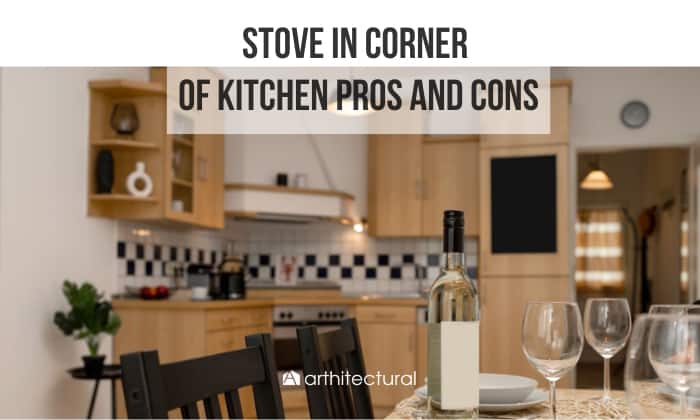

Ideal for small houses, a corner stove kitchen layout helps save space while ensuring your cooking area is functional. Plus, with such placement, you can easily set up a kitchen work triangle, which ensures both efficiency and aesthetic values.
However, this design idea doesn’t come without drawbacks, such as installation and cleaning difficulties, poor ventilation, and a potentially awkward user experience.
Keep reading as we explore the stove in corner of kitchen pros and cons.
Can a Stove Go in the Corner of a Kitchen?
As you can likely guess, choosing a stove placement in the corner is possible, especially if you’re aiming to save space. However, there are exceptions, considering how the ventilation preferences and stove’s placement don’t always match.
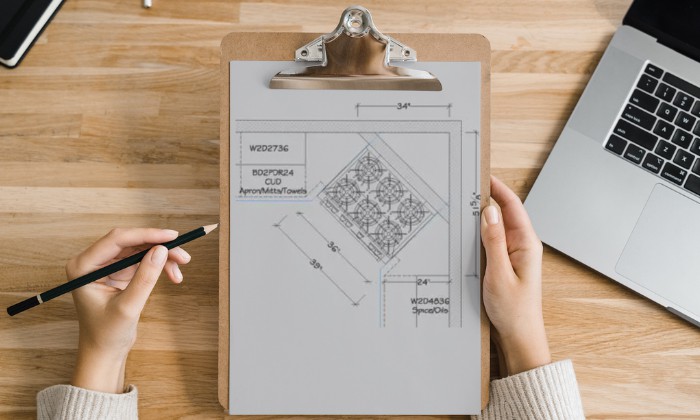
For example, if the cabinets are built flush against the wall’s corners, whereas the stove is installed on a 45° axis, it may be tricky to build a range hood directly on top of the stove. Not to mention that you may not be able to find a corner hood fan for ventilation.
Corner Stove Layout Benefits and Drawbacks
A corner range in kitchen, while not a bad idea in and of itself, can still present risks and challenges. Read on to find out if the drawbacks outweigh the merits for you.
1. Benefits
Save space
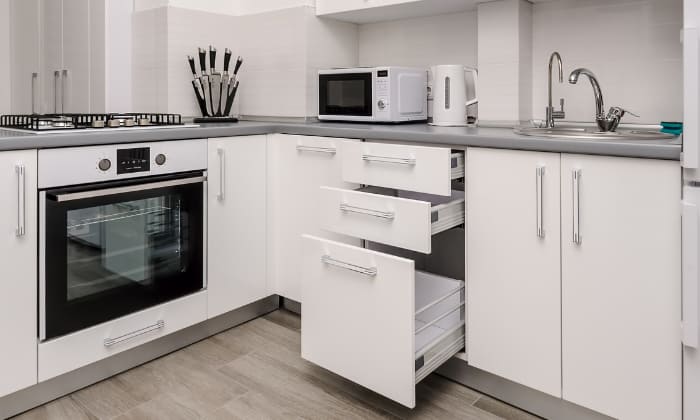
The most noticeable advantage of a kitchen with corner stove is space efficiency, especially if the corner is so awkwardly shaped that you can’t utilize it any other way. Plus, the space below the ventilation unit or behind the stove’s false walls can be turned into a storage space.
What’s more, the free countertop space on two sides of the stove can also come in handy. For example, you can prepare ingredients for a recipe while simultaneously keeping an eye on the dish cooking on the stove.
Ideal for a kitchen work triangle setup

Even in small kitchens, you need to plan out your setup properly to minimize the distance between the most important appliances, namely the stoves, the refrigerator, and the sink. These three make up the kitchen work triangle — a design that can be made easy with corner cook tops.
For example, with the stove as the focal point, you can place the sink and the fridge on two sides, ensuring the distance between each appliance is 4 to 9 feet. By following this rule, you can easily get to other areas in the kitchen and ensure a seamless workflow.
The kitchen work triangle also has the bonus advantage of being aesthetically pleasing.
Reduce chances of accidents
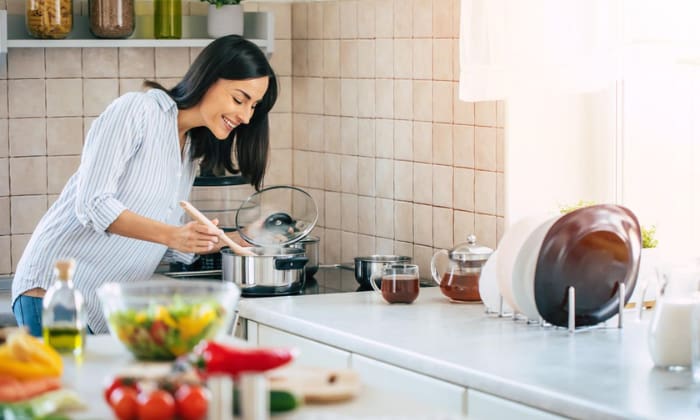
While easy to access, cooktops in the middle of the room, such as a kitchen island cooktop, increase the risks of someone getting burned. This is because the stove and, by extension, the hot pans, pots, and food are more likely to get in the way.
In contrast, the stove-in-corner placement doesn’t have this problem.
2. Drawbacks
Difficulties in installing and cleaning

With the stove against side walls, you’ll have to measure the available space and consider ventilation requirements carefully. Although this procedure also applies to cooktop installation in other areas, it can be more challenging to come up with corner stove ideas, given the awkward placement and angle.
This kitchen design can also result in tight and/or out-of-reach corners that make cleaning more challenging. And with how dirt tends to get lodged in crevices, keeping your cooking area in a pristine state can be even more difficult.
Potentially poor ventilation and fire risks
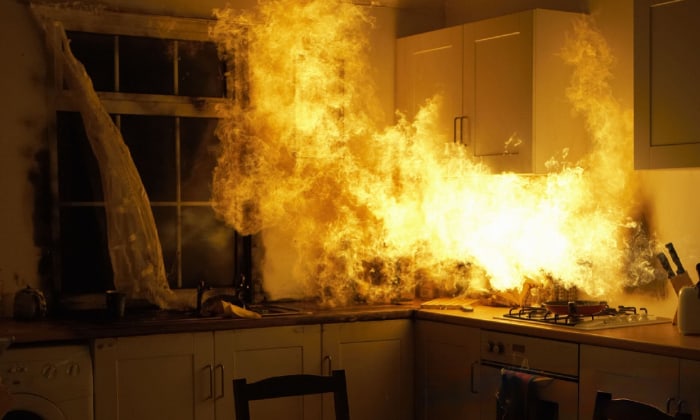
The thing about corner stoves is that there are usually two walls on their sides, which can catch fire if the area is poorly ventilated. You’d think the issue can be addressed by placing the stove under a window, but this only aggravates the situation.
So, you’d want to install a range hood over the stove. However, the catch is that corner hood fans may not always be readily available, so it may be hard to build a proper ventilation system.
Awkward user experience

The corner isn’t the best position if comfort is your top priority. You may have to position yourself at an uncomfortable angle and find reaching for certain parts of the stove, such as the burners, unwieldy.
And if someone decides to help you with the cooking, the experience can be even more confining as the layout usually allows for only one person.
Corner Stove Design Ideas and Considerations
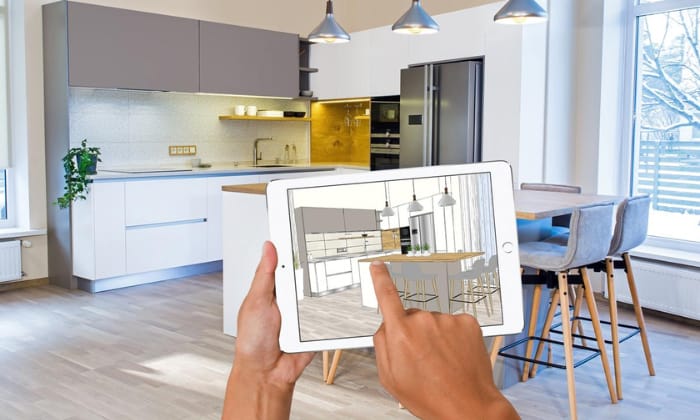
Before you go ahead with the decision to install a stove in the corner, consider the factors below:
- Make sure there’s enough kitchen space to accommodate both the stove and the recommended clearance.
For example, the smallest corner stove dimensions you can go for are 30” wide, 25” deep, and 36” tall. However, you’d also have to leave 12” of clearance between the stove and its sidewall. And if yours is a slide-in range, there must be a distance of 2 inches between it and the back wall as well.
- The design should favor a kitchen work triangle layout. With how awkward and confining it can be to use the stove, you’d want at least the rest of the kitchen to have a seamless traffic flow.
- The upper cabinets should be at least two feet from the stove so that things don’t catch fire.
- Regarding where to put the stove in the kitchen, try to steer away from corners near the entrance. Stove placement here only gets in the way and makes going in and out more difficult.
Again, do not install the stove under the window. And if there are any curtains or flammable objects nearby (or less than 36 inches away), remove them.
- To make cleaning more manageable, cover the gap between the stove and the wall using either plastic tubes or T-molding and install a stainless steel backsplash. If you don’t like stainless steel, at least install something flame-resistant there, such as stones.
Alternative Ideas for Corner Stove
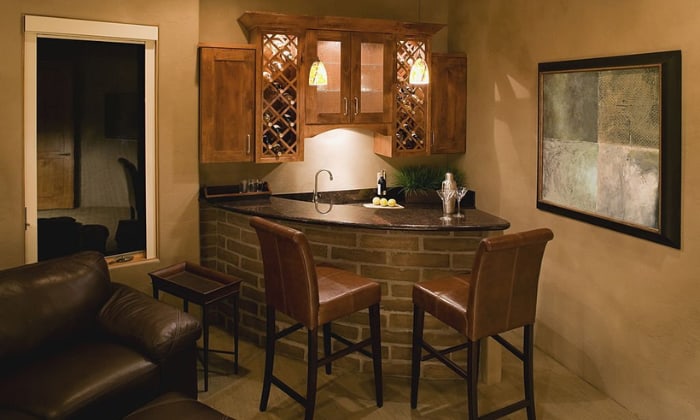
What else can you do to fill an unused corner if installing a stove here is out of the question? Check out the following ideas:
- Turn the corner into a storage space by placing a tall cabinet with drawers or open shelving there. For a too-confined space, a Lazy Susan cabinet will be better.
- You can build a small home bar here. There are plenty of corner bar ideas on the Internet; surely, you’ll be able to find one to your liking.
- If you’re not much of a drinker yourself, the space can be used for eating breakfast, working on your laptop, etc. In this case, placing a small table and chairs there will do.
- Decorate the corner however you want, be it by painting the wall a contrasting color or placing some plants there.
- A corner sink can be a more reasonable choice than a corner stove, as you don’t have to deal with fire hazards.
Conclusion
After learning about stove in corner of kitchen pros and cons, do you think you’ll go down this route? If not, you can try out other space-efficient kitchen ideas, such as going for a U-shaped layout, putting away your countertop appliances, and building shelves on clear walls.
Should you still be unable to decide, maybe it’s time to call in the big gun—hire a professional kitchen designer for a beautiful and functional cooking space.
The post Stove in Corner of Kitchen Pros and Cons appeared first on Arthitectural.
